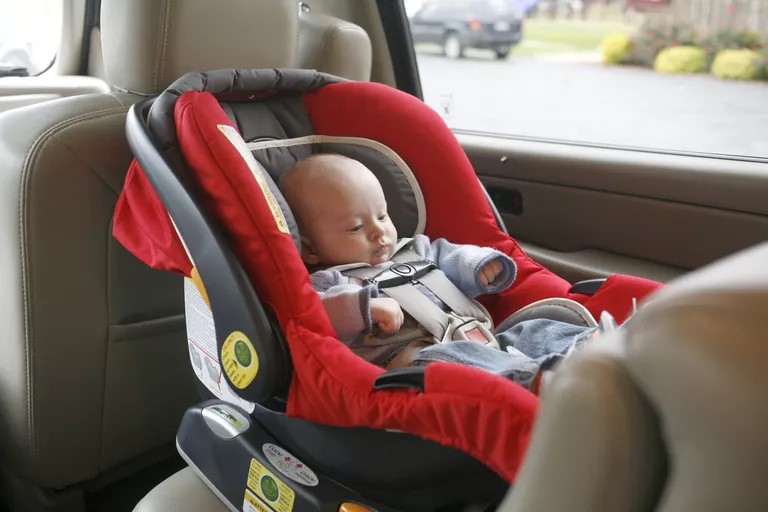Look before you lock: Preventing dangers to infants and kids in hot cars
May 25, 2021

Photo: National Highway Traffic Safety Administration
By: Richland Public Health
HEATSTROKE AND CHILDREN LEFT IN CARS
It was confirmed on April 30, 2021, that a North Carolina 5-month-old baby lost her little life after being left alone in a hot car last Sunday, April 25. This was the first hot car death of the year.
Though it is too late for this little girl, we need to double our efforts to focus on education and awareness regarding the dangers of hot cars.
“After more than 20 years of public education, the number of children dying in hot cars has gotten worse, not better,” stated Janette Fennell, president of Kids and Cars Safety. “The years 2018 and 2019 were the worst in history with a total of over 100 children that died in hot cars nationwide,” she continued. 883 children have died due to Pediatric Vehicular Heatstroke since 1998.
Nobody believes that a hot car tragedy is going to happen to them or their family until it does. Richland Public Health joins many national child and car safety organizations in encouraging parents to adopt several simple habits to protect their children, even if they believe this could never happen to them.
Look Before You Lock Safety Checklist
Create simple habits to help keep your child safe.
Make sure your child is never left alone in a car:
- Place the child’s diaper bag or item in the front passenger seat as a visual cue that the child is with you.
- Make it a habit of opening the back door every time you park to ensure no one is left behind. To enforce this habit, place an item that you can’t start your day without in the back seat (employee badge, laptop, phone, handbag, etc.)
- Ask your childcare provider to call you right away if your child hasn’t arrived as scheduled.
- Clearly announce and confirm who is getting each child out of the vehicle. Miscommunication can lead to thinking someone else removed the child.
Make sure children cannot get into a parked car:
- Keep vehicles locked at all times, especially in the garage or driveway. Ask neighbors and visitors to do the same.
- Never leave car keys within reach of children.
- Use childproofing knob covers and door alarms to prevent children from exiting your home unnoticed.
- Teach children to honk the horn or turn on hazard lights if they become stuck inside a car.
- If a child is missing, immediately check the inside, floorboards, and trunk of all vehicles in the area carefully, even if they’re locked.
What To Do If You See a Child or Pet Alone in a Vehicle
Protecting children is everyone’s business.
Every year on average, 38 children die in hot cars. KidsAndCars.org is calling on the public to be prepared to take action to save a life. If you see a child alone in a car; get involved.
Here’s What You Should Do:
- Don’t wait for the driver to return. Call 911 right away. The 911 operator can help give you instructions on how to care for the child or pet.
- If the child or pet is not responsive or is in distress, immediately:
- Get them out of the car by any means necessary*
- Move the them to a cooler environment (somewhere with AC or shade if AC is not available)
- Remove child’s clothing to let the heat dissipate from their skin
- Dampen them with cool water or wet rags, immerse in cool water (not in an ice bath)
- If the child or pet is responsive and not in distress:
- Stay with them until help arrives
- Ask someone else if they can locate the driver. You might suggest they ask security of a store manager to page them
Warning Signs of Heatstroke:
- Hot, flush or red
- Slow, weak pulse or strong, rapid pulse
- Lethargy, confusion or strange behavior
- Nausea
- No sweating
« Back to News
